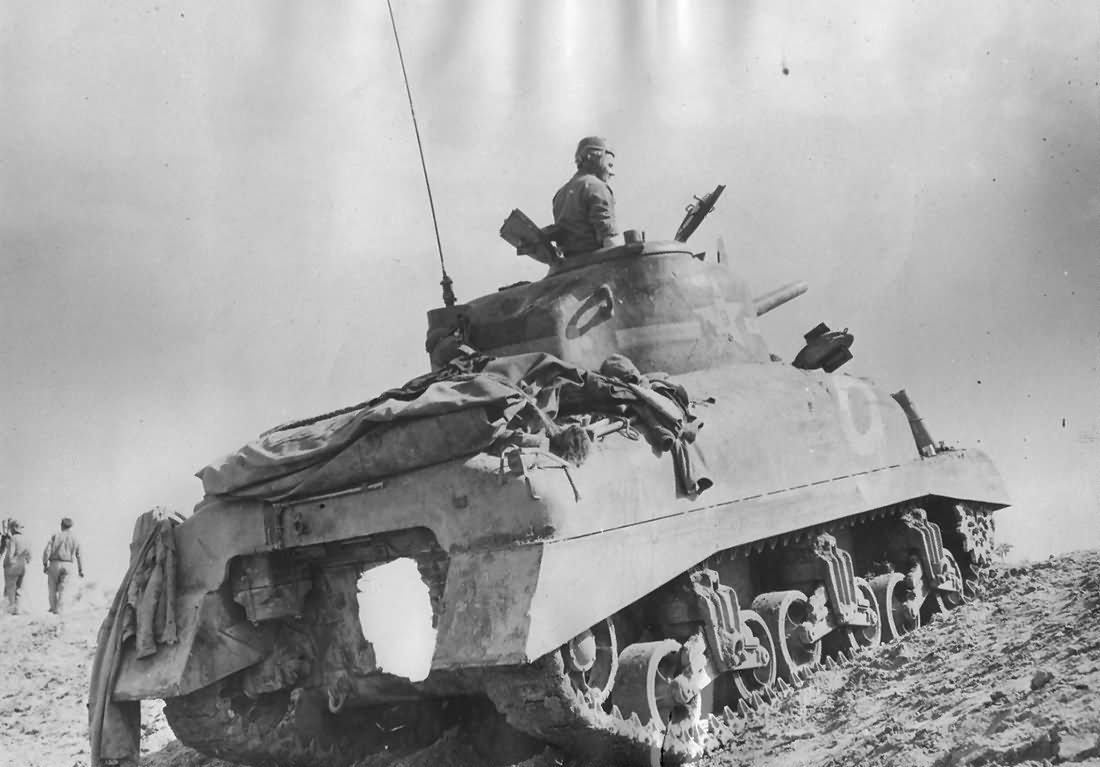The combat career of the M4 Sherman tank in U.S. hands began during the Tunisia Campaign of World War II. Initially, U.S. armored units were equipped with the older M3 medium tank, which first saw combat in November 1942 when the 2nd Battalion of the 13th Armored Regiment engaged German forces. The introduction of the Sherman to battle occurred during the ill-fated attempt to stop the German advance through Faid Pass and retake Sidi Bou Zid in February 1943, where U.S. forces suffered significant losses.
However, the first U.S.-manned Shermans to see combat belonged to a platoon from the 2nd Armored Division, which was attached to the 2nd Battalion of the 13th Armored Regiment. On 6 December 1942, five Shermans were lost near Tebourba. This early engagement ended disastrously for the U.S., mainly due to well-positioned enemy tanks and antitank guns. Nevertheless, these lessons were quickly absorbed and improved tactics followed in future engagements.
The Arrival of Shermans in Tunisia
By mid-December 1942, Company G and part of Company H from the 67th Armored Regiment of the 2nd Armored Division arrived in Tunisia with 26 M4A1 Shermans. They supported the British 1st Guards Brigade in the fighting around Longstop Hill. At the same time, Henry Gardiner, commander of the 2nd Battalion of the 13th Armored Regiment, received 20 M4A1s transferred from the 2nd Armored Division, restoring his battalion to nearly full strength.
Gardiner’s battalion then fought in the Ousseltia Valley in early 1943. Describing his strategy after the heavy losses at Tebourba, Gardiner emphasized the importance of avoiding hasty attacks. His tactical adjustments were crucial during subsequent engagements, where he used his Shermans to engage enemy forces from a more cautious, prepared position. His new M4A1 Sherman, Henry II, replaced his previous M3 tank lost in December and remained in service until destroyed on 17 February 1943 during the retreat from Sbeitla.
The Battle at Sbeitla
The 2nd Battalion played a pivotal role in covering the withdrawal of Combat Command B during the battle at Sbeitla in February 1943. Facing a superior German force, Gardiner’s battalion successfully disengaged while holding off the 21st Panzer Division. The battalion lost nine medium tanks, including Gardiner’s own, and Gardiner himself was reported missing, only to reappear after an extraordinary trek back to friendly lines after helping a wounded crewman. For his bravery, Gardiner was awarded the Distinguished Service Cross.
The Continued Service of the Sherman in Africa and Beyond
Gardiner’s next tank, Henry III, was another M4A1, which also met its end in May 1943 after being destroyed by an antitank gun near Mateur during the final drive toward Bizerte.
After the North African Campaign, the M4 Sherman and M4A1 became the standard tanks for the 1st Armored Division. They continued to see extensive action throughout the Italian Campaign and were joined by late-model M4A3 Shermans after the fall of Rome in 1944. The Shermans would play a critical role in many battles across Europe, becoming a mainstay of U.S. armored forces.
